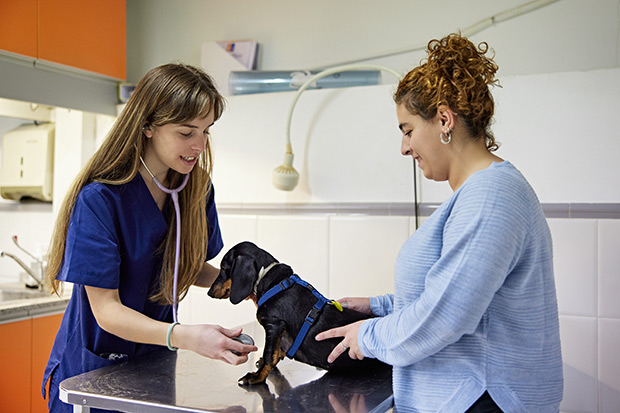Putting the Positive Pet Care Guide into practice
Wholehearted Veterinary Care in Grand Rapids, Michigan, is a small animal and exotics practice that opened less than a year ago. Dr. Kara Malone, the practice owner, said that in addition to providing high-quality medicine, she wanted to put great importance on maintaining a positive practice culture.
She explained that her experienced team had previously encountered rude, angry, and aggressive clients, often in environments where clients were allowed to continue the behavior without consequences.
“Right off the bat, I wanted to set expectations that these behaviors were unacceptable,” Dr. Malone said.
So when the Positive Pet Care Guide came out in April, shortly after the clinic opened, she saw an opportunity to use the document to provide detailed expectations about client and staff behavior.
Dr. Malone isn’t the only one. As of early November, there have been 6,653 page views and 2,848 downloads of the Positive Pet Care Guide on the AVMA website.
The Positive Pet Care Guide is the result of an industry-wide working group, led by the AVMA and Mars Veterinary Health, aimed at strengthening the relationship between veterinary teams and pet owners through resources, education, and collaboration. The free resource is available to download online.
At times, the emotional concerns of clients and the emotions of veterinary teams are at odds with each other, said Dr. Ari Zabell, vice president of client experience at Banfield, one of Mars’ family of businesses. The guide is designed to help clients understand that veterinary teams are committed to meeting their expectations while also asking that clients commit to meeting the needs of hospital teams. At the end of the day, everyone deserves to be treated fairly and professionally.
Dr. Zabell added that because each veterinary practice is unique, with its own culture, policies, processes, and clientele, practice managers should take that into consideration when finding an approach that works best for their team and customers.
“Don’t be afraid to tailor the guide to fit the unique needs and goals of your practice,” he said.
When approaching the rollout and introduction of the guide, Dr. Zabell said to do so in an empathetic and understanding way so that both clients and the veterinary team feel supported and not judged.
It’s possible that clients might not immediately understand the goal of the guide or don’t feel a need to abide by it, so preparing the veterinary team in advance of these tough conversations may be helpful.
“I believe the most important aspect of the guide is acknowledging the need for it,” Dr. Zabell said. “The guide helps both parties (clients and associates) understand the emotional needs of the other side so that they can respectfully negotiate better and [build] more mutual relationships.”
Dr. Malone explained that the guide allowed her practice to get started with clarity around these expectations. A copy is laminated and displayed in their lobby, available on their website, and has been posted on their social media channels.
“I like having the talking points and clear expectations available for any staff member or client to reference,” she added.
Tips and suggestions for introducing the Positive Pet Care Guide are available on the AVMA website. The Association also features a reputation management toolkit, containing practical resources that empower veterinary professionals to protect their reputations, prevent and combat cyberbullying, respond to crisis situations, and support team wellbeing.

